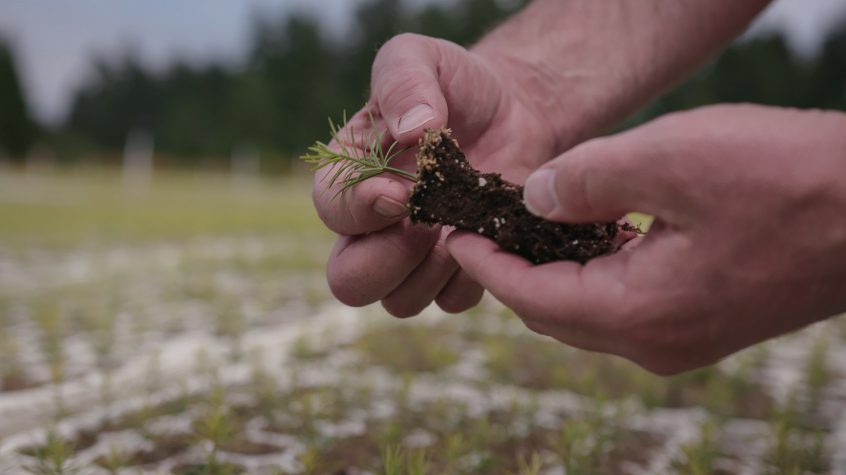The essential role trees play in removing carbon dioxide from the atmosphere is well documented. But as we – researchers, consumers, businesses, environmental advocates and government agencies – continue to collectively search for sustainable solutions to global warming, we are learning and better understanding how working forests and wood products are integral to mitigating against carbon emissions.
Working forests, which are forested land that is sustainably managed to grow and supply a steady and renewable supply of wood-based products, by their very nature follow a cycle of new forest, thinning, managing the tree stand, harvest and renewal that results in trees continually absorbing carbon from the air.
Washington forests sequester 35% of our state’s carbon emissions, and working forests play a unique part in this process. Researchers have found that “younger plants are able to extract carbon from the air and incorporate it into biomass more quickly than mature trees.”
Not only do the trees sequester carbon dioxide in the trunk, branches, leaves and roots throughout their life, but the harvested wood also continues to store that carbon throughout the life of the wood product. A recent report released by the Intergovernmental Panel on Climate Change declared that:
Sustainable forest management can maintain or enhance forest carbon stocks, and can maintain forest carbon sinks, including by transferring carbon to wood products, thus addressing the issue of sink saturation (high confidence). Where wood carbon is transferred to harvested wood products, these can store carbon over the long-term and can substitute for emissions-intensive materials reducing emissions in other sectors (high confidence). Where biomass is used for energy, e.g., as a mitigation strategy, the carbon is released back into the atmosphere more quickly (high confidence).
To put it plainly, the wood used in building construction, furniture and other timber products we all use daily that are harvested from well-managed forests creates a magnifying effect where:
…greenhouse gases are sequestered even further as forestry land is replaced and new trees absorb carbon dioxide.
“When we take the wood out of the forest, we are planting new forest and sequestering new carbon,” said Indroneil Ganguly, associate professor at the UW’s School of Environmental and Forest Sciences and one of the authors of the study. Building with timber, he said, is “almost like multiplying the acres of forest.”
Climate change/global warming is a huge concern among many Washington voters, a recent poll finds. A survey conducted by the Washington Forest Protection Association in August of this year discovered that King County voters identified climate change/global warming among the most critical issues facing Washington state at this time right behind homelessness.
More than 4 out 5 questioned (82%) said that they are “personally concerned” by climate change. An overwhelming majority of voters polled also recognized that the forestry industry and active forest management could help mitigate greenhouse gasses in the atmosphere. Some 85% of King County voters said that they support activities like logging and replanting forests to help reduce forest fires and 71% of people polled said that they approve of the forest products industry, especially after learning that Washington’s working forests reduce our carbon footprint by 35%.
You can learn more about how working forests are a part of a carbon-friendly solution by clicking here.
